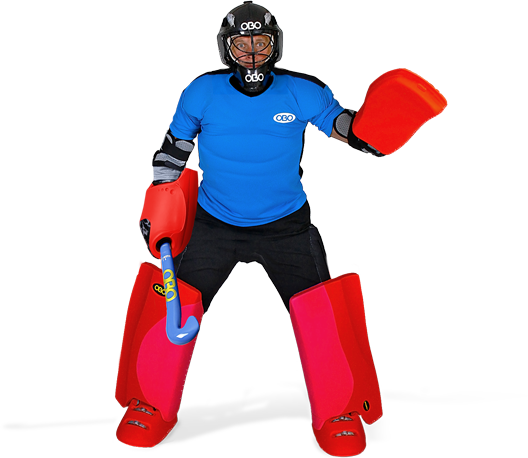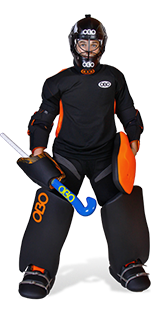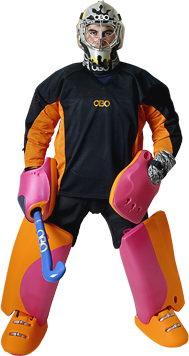KEEPERS RESOURCES

Chest pads
There are a lot of goalkeepers, who play with a basic chest or body pad, allowing them the freedom of movement to make reactive saves on the play, with the extended ability to circulate their shoulder joints and move freely without stiff arm pads limiting extension of the arms. Generally made out of foam type materials, but increasingly using harder plastic padding for higher levels of play, they feature a basic plate to cover the body, with straps around your back and arms to secure it in place.
If the chest pad does not cover your ribs or abdomen properly, especially if there is a gap between it and your shorts (which can leave you vulnerable when exposed on plays where the play is tight and the shooter has the time to ‘wind up’ on their shot, like a close in, raised shot from about 5 feet away, with potential bruising or being ‘winded’ on the shot), then you may want to look for better padding.
Consider your options when purchasing – don’t just go for a chest pad because you like its price; the cheaper they are, the less foam there is. The cost reflects the thickness of the foam and you want something with a suitable degree of protection to look after your important internal organs and prevent broken ribs. At low levels, for youngsters who will not face hard shots to these scary areas, and beginners who may not decide to play the position long, these are great, but don’t put yourself in pointless danger.
Common manufacturers include all the main companies, like Monarch, Mercian, and Grays in the UK, along with Mazon (Australia), and Brabo (the Netherlands), providing general foam padding chest pads for lower level games. Mercian’s old T-pro plate design (which is now outdated as the manufacturing machine broke) offers a hard plastic sheet for shot stopping, with added abdominal guards for extra protection to the stomach area.
TK produces a far more protective international version, based on segmented plastic square inserts covering the body, which ‘block’ the ball, absorbing the impact of the ball, by ‘spreading’ out the force of the shot. The thick plastic means there is more behind it, compared to thin foam.
Obo’s chest pad design (which comes separately to the arm pads) uses high density foam for maximum protection in order to absorb the impact of the shot; more vulnerable areas have dual density foam. Its design incorporates 38 individual inserts, which means that there is no ‘bunching’ (that would otherwise compromise flexible movement) when moving, or lying down against a shot.
Pros
-
Affordable prices
-
Cushions the direct shot, if the ball is missed by the gloves
-
Size and shape means they do not interfere with padded shorts, so no movement problems
-
Increased arm movement, as they are free from disruption by integrated arm pads or wraparound shoulder padding
-
Lighter, meaning reduced weight for the goalkeeper, enabling them to be quicker around the D
Cons
-
Often no coverage of the shoulders (shoulder caps normally combined with and worn underneath for extra protection)
-
Ribs can sometimes lack coverage, putting the wearer in danger
-
Foam thickness varies and can often be fairly thin, so it is important to match that to your level of play when purchasing – against hard shots, the goalkeeper could end up with bruised ribs or bruising to the stomach otherwise
Comments
Leave Your Comments Below















